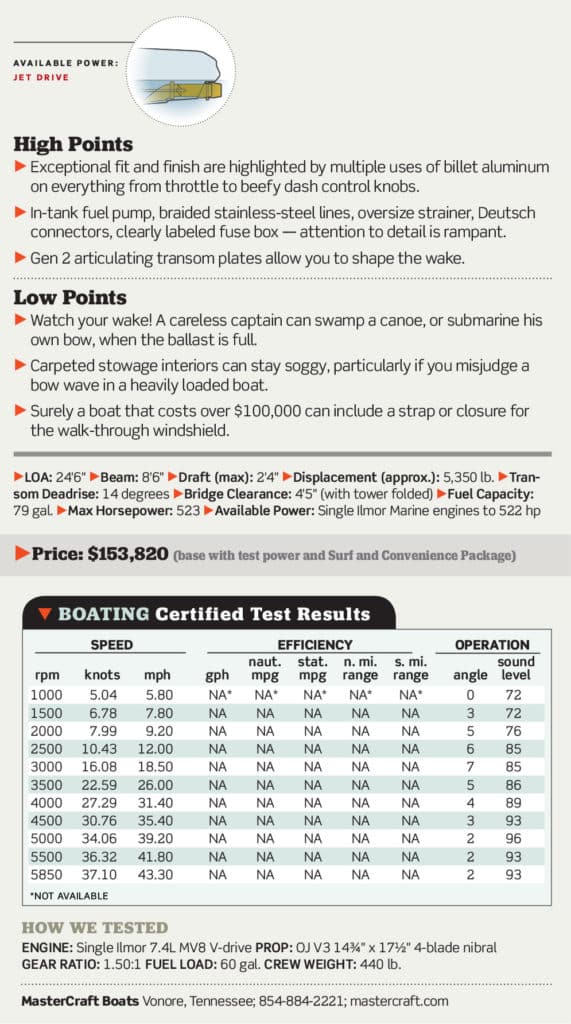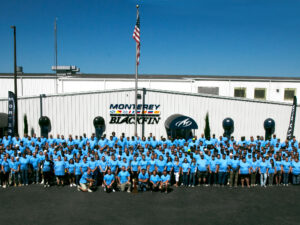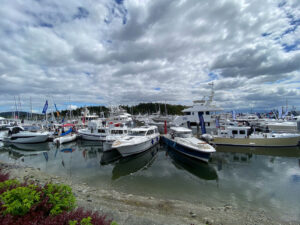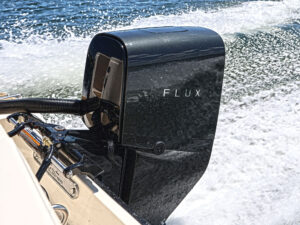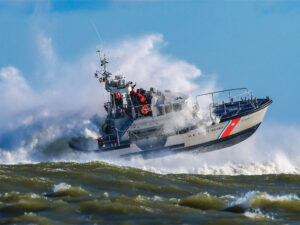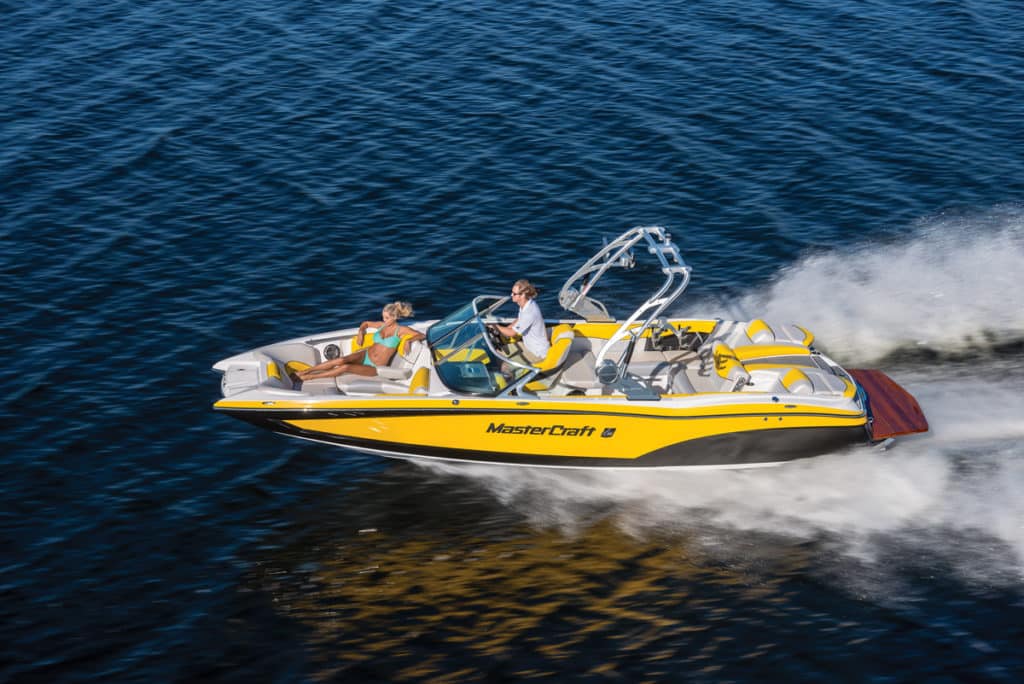
Beam: 8’6″
Draft (max): 2’4″
Displacement (approx.): 5,350 lb.
Transom Deadrise: 14 degrees
Bridge Clearance: 4’5″ (with tower folded)
Fuel Capacity: 79 gal.
Max Horsepower: 523
Available Power: Single Ilmor Marine engines to 522 hp
More Information: mastercraft.com
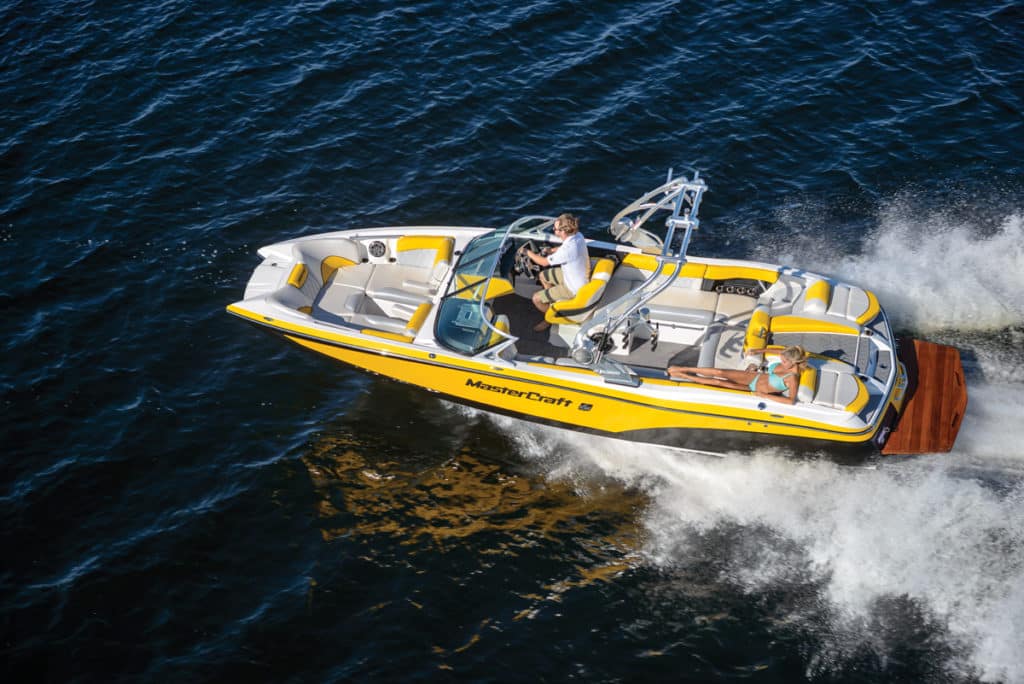

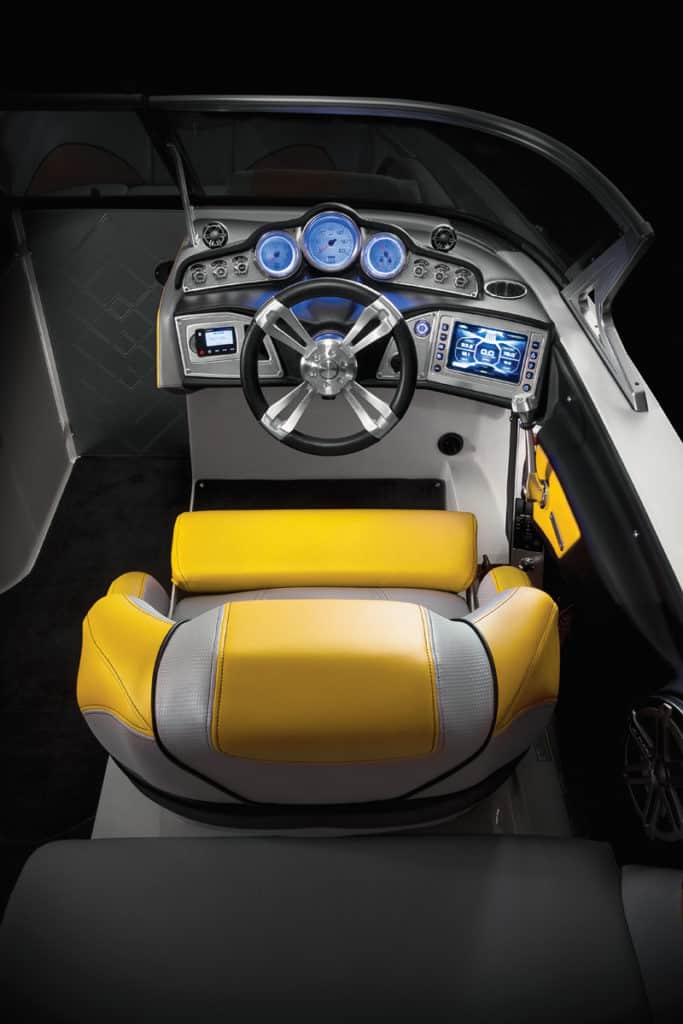
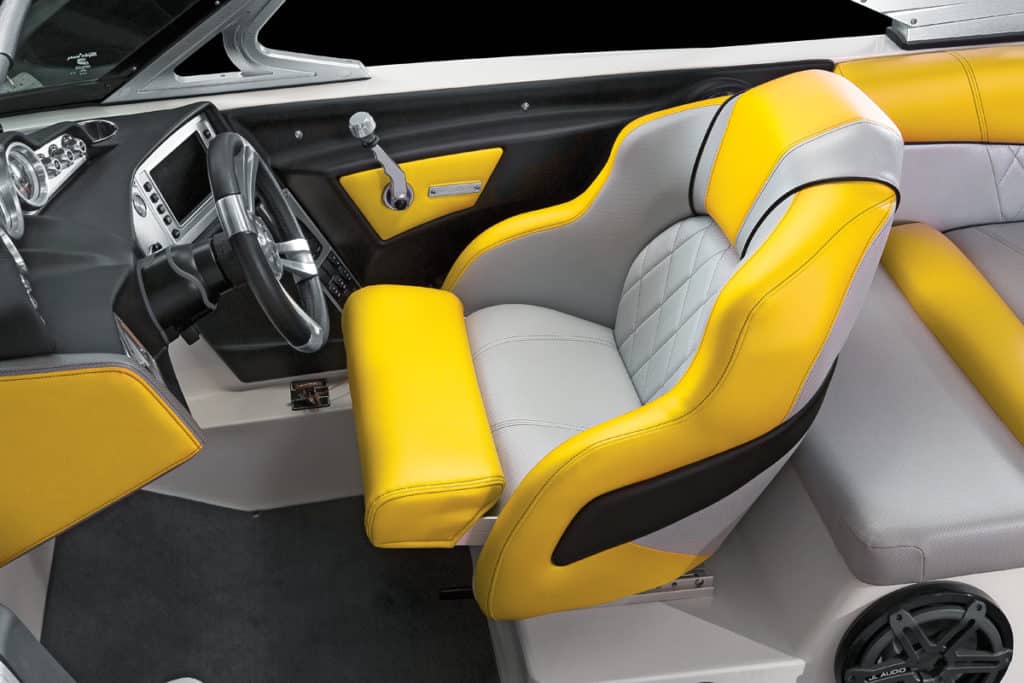
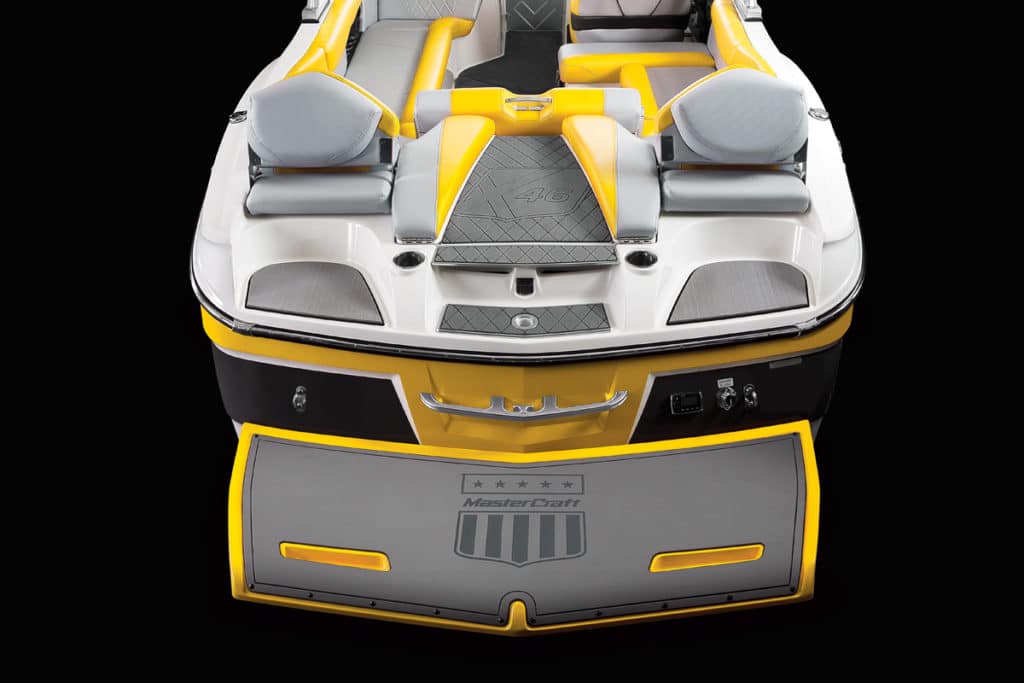
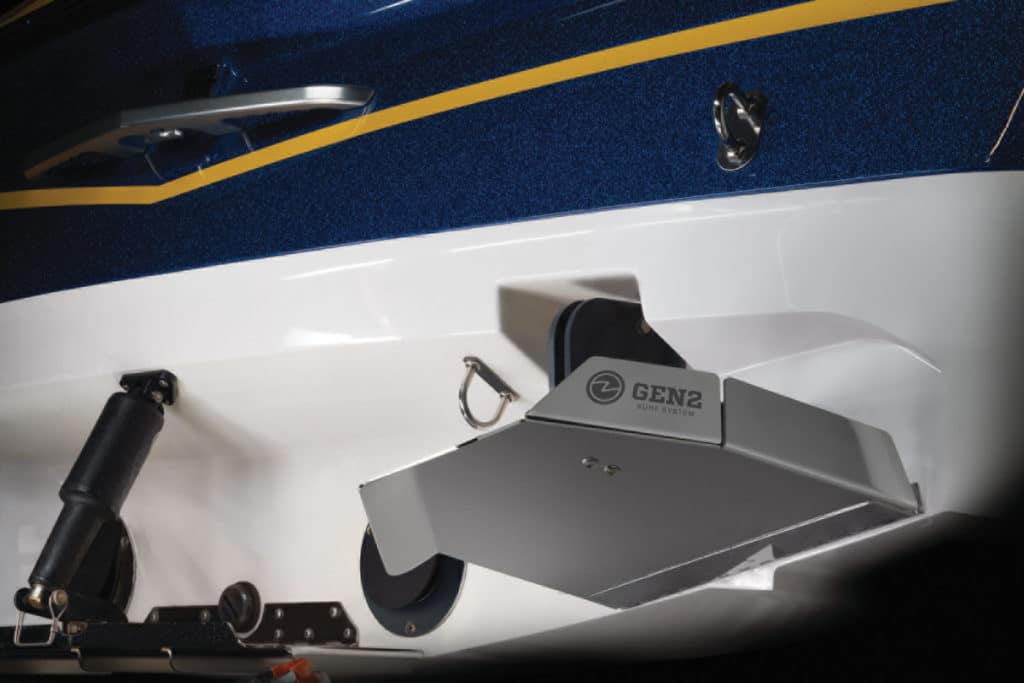
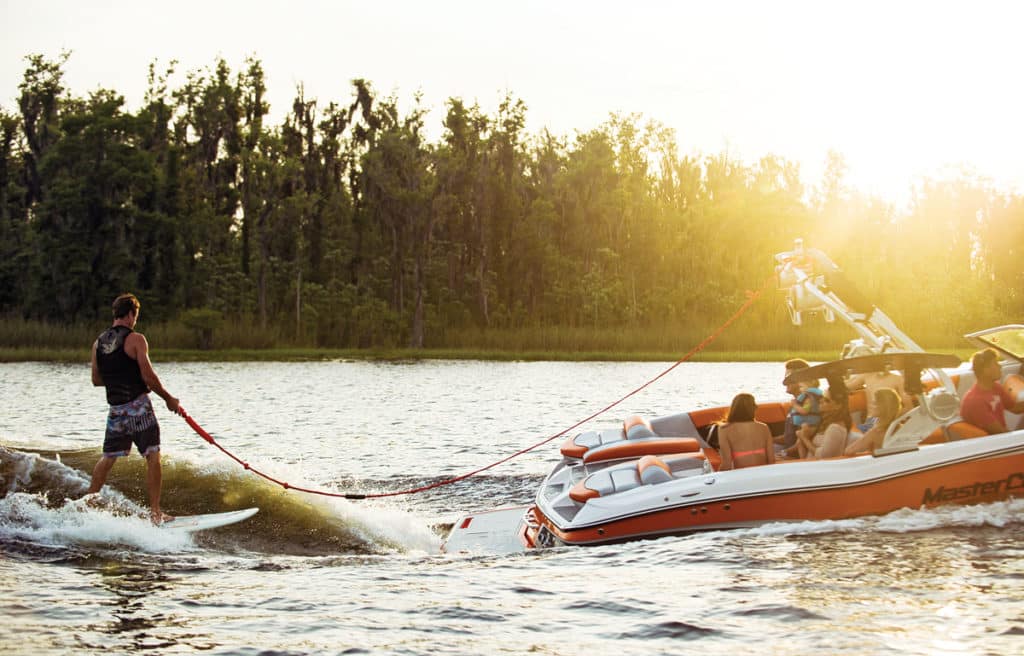
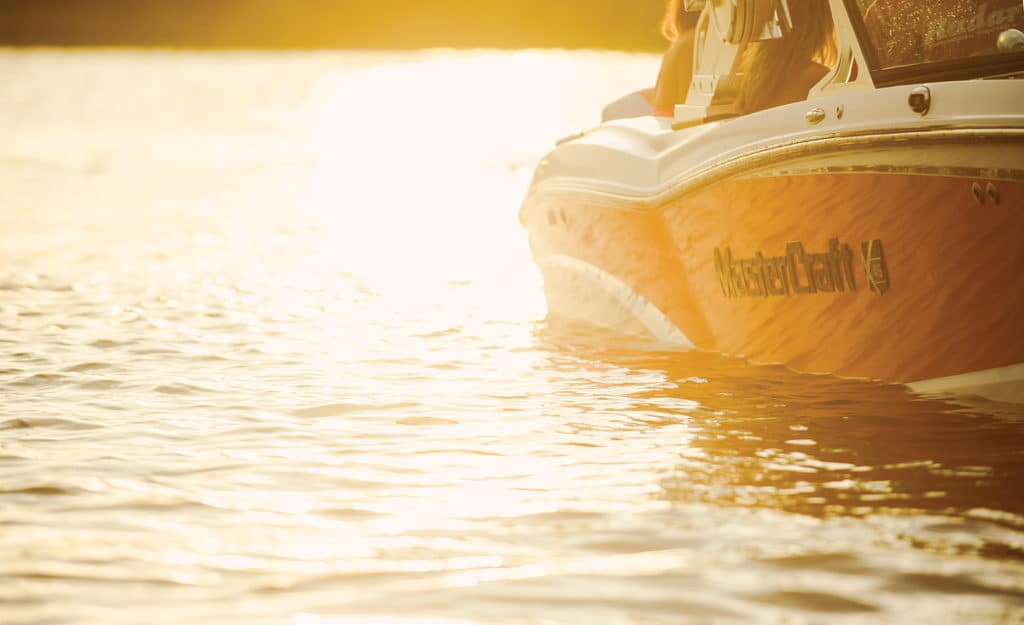
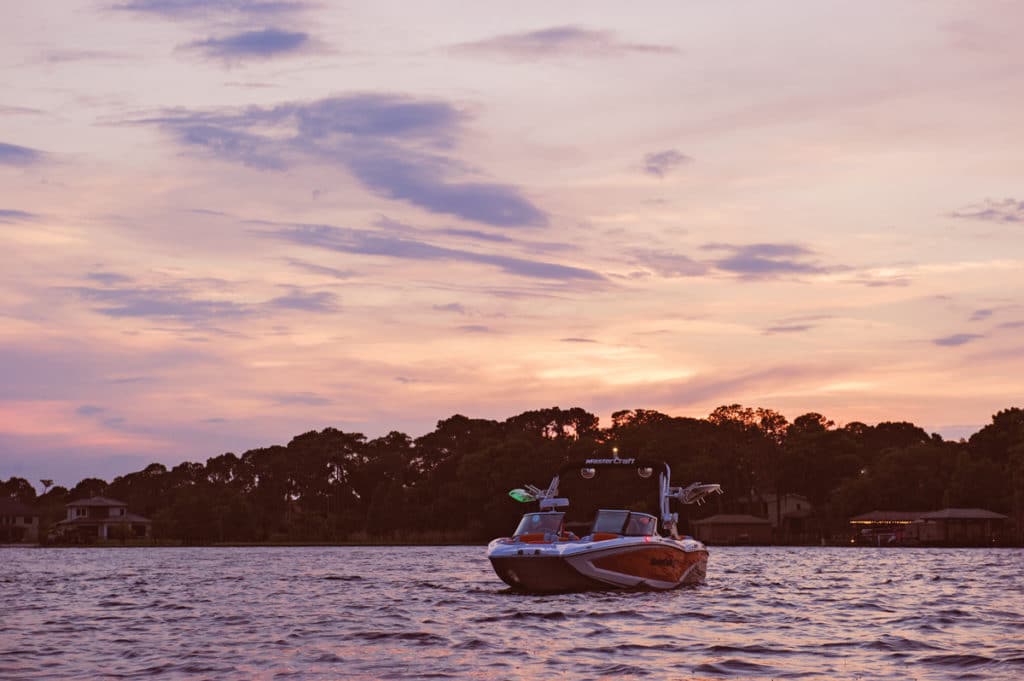
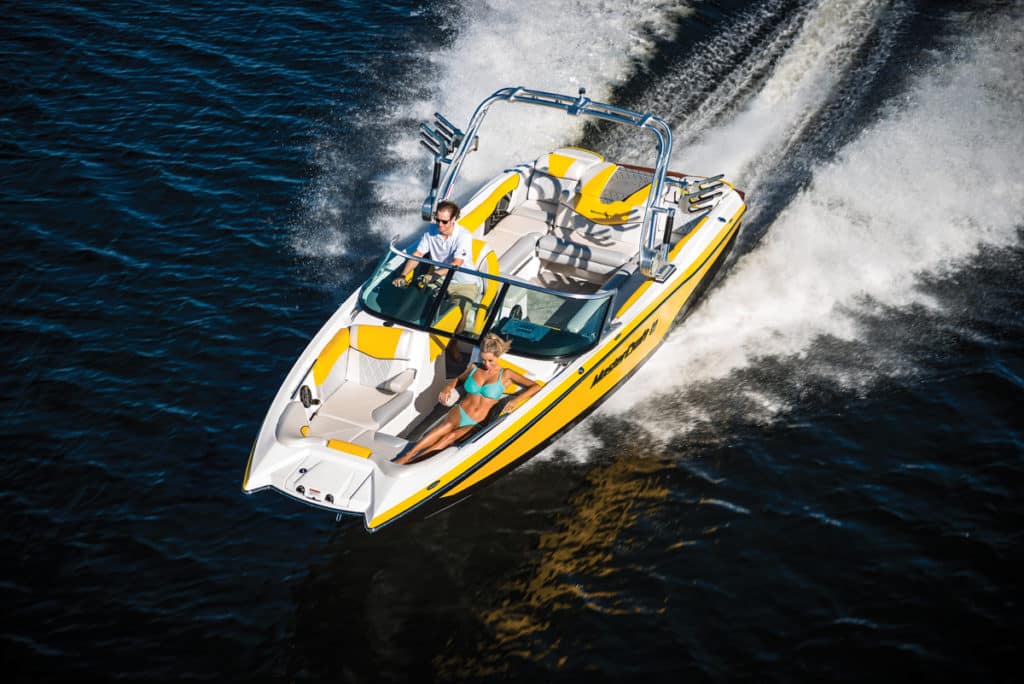
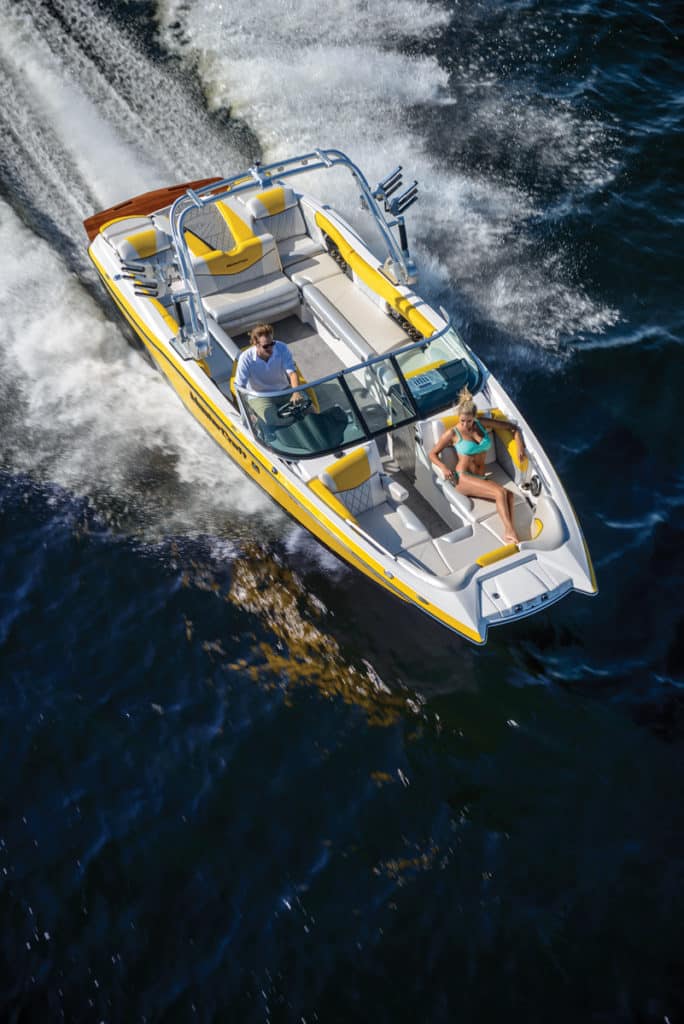
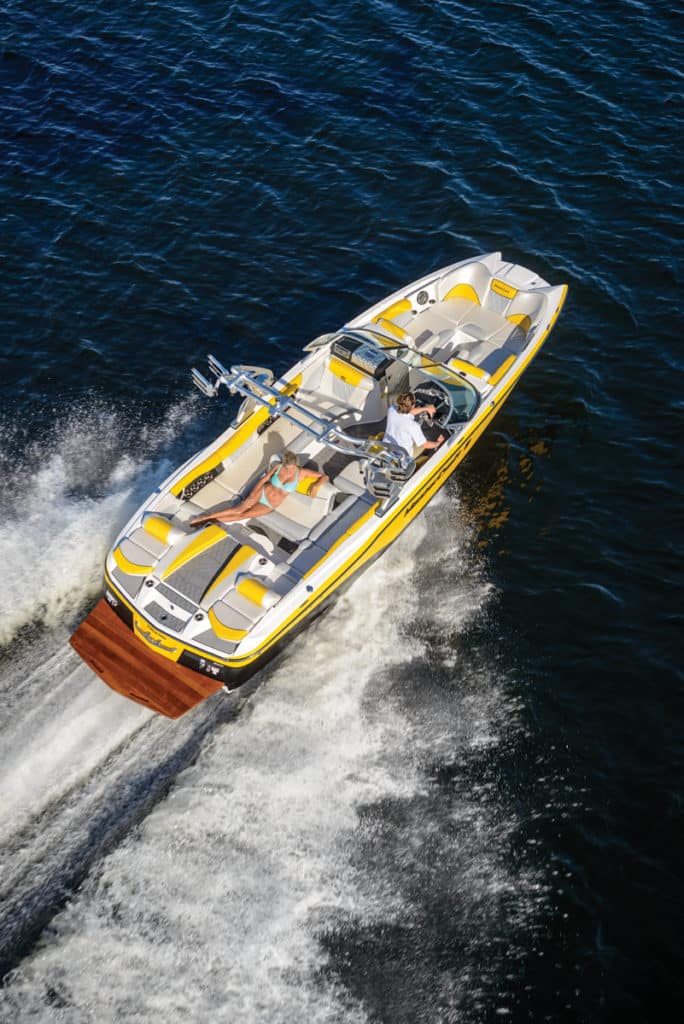
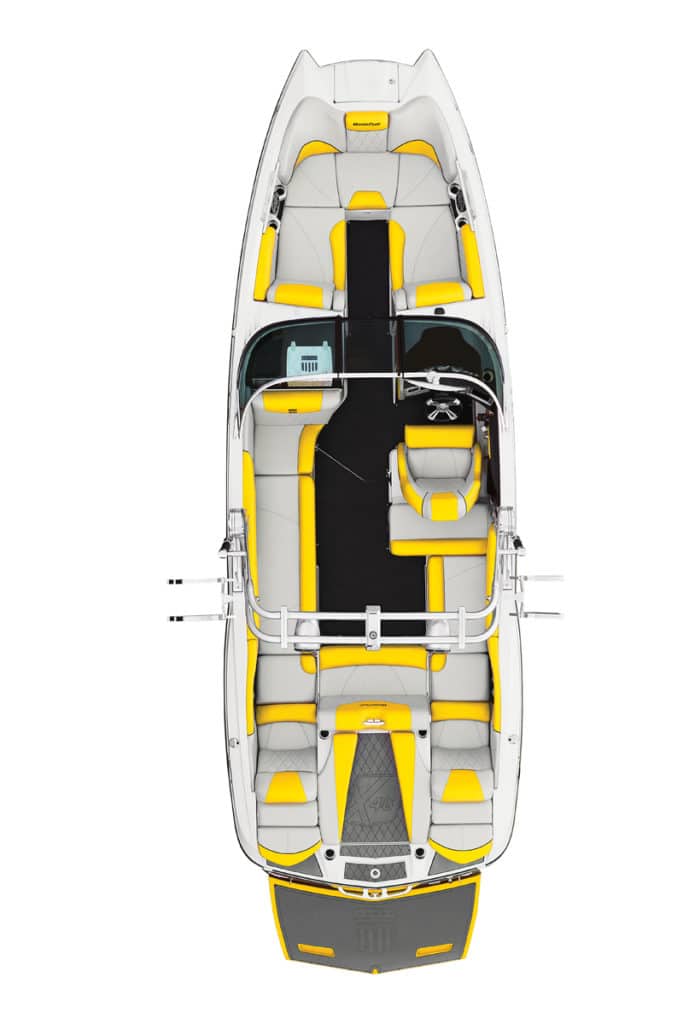
Catching waves used to require an ocean and the timely cooperation of Mother Nature. The other day, my 13-year-old grommet and I surfed a seemingly endless “left” in the middle of a glass-calm central Florida lake. Mother Nature’s stand-in? MasterCraft’s X46, a boat that lets surf wannabes of all ages shred waves, no ocean required.
MasterCraft has a lot of practice building waves, or rather wakes. The brand’s iconic X-Star — one of the first models to target wakeboarders with V-drive power and an integrated ballast system — virtually transformed the company. Building a better boat for wakesurfing, however, requires more than just lots of onboard ballast. Wakes must be shaped and favor a rider’s preferred side. In the sport’s early years this was done by shifting crew, and ballast, into the appropriate corner of the stern. Today, MasterCraft’s Gen 2 Surf System (an integral part of the $20,410 Surf and Convenience Package) accomplishes it all in seconds with software and a trio of clever, articulating transom plates.
Yes, weight is still part of the equation. Standard, roto-cast ballast tanks add 1,015 pounds, spread evenly below the cockpit sole. Twin ballast bags add another 1,000 pounds to the boat’s 5,350-pound displacement. Fine-tuning those hulked-up wakes falls to the Gen 2 tabs. Controlled via an intuitive Murphy touch-screen helm display, the roughly square asymmetrical plates on the port and starboard corners shape the wake and compensate for prop torque. The rectangular “attitude adjustment plate” at the transom’s center influences the wake’s length. Manipulating each allows the wake to be concentrated and shaped to favor either side, depending upon rider preference.
On the board, I found the wake lived up to MasterCraft’s promise of three separate “zones,” with the first 5 feet ideal for those learning to ride, the next 5 feet featuring a more defined lip and push, and the final 5 feet offering the most vertical lip and steepest face to drop in and accelerate. I quickly found the sweet spot in the wake’s Zone 2 pocket, and I used the steeper Zone 3 to accelerate. As the captain, controlling the wake-producing hardware is accomplished with intuitive swipes across the touch screen. Wake possibilities include shorter, steeper wakes for those on smaller, skim-style boards and longer and shallower wakes for those wanting a more traditional, surf-style ride. I was also able to easily dial things in for wakeboarding, building steep wakes with plenty of pop for those who like lots of upward boost, or wide, gentler wakes for those who like to push their jumps into the flats.
Using weighting techniques and shaping hardware to produce ideal surf wakes is the trend in the tow-sport market. The Super Air Nautique G25 ($155,105 with a PCM XR 550 and Nautique Surf System) uses the Nautique Surf System, consisting of transom-mounted plates extending out to the sides and down from the transom, to redirect water coming off the hull side and clean up the desired wake.
With so much action in the boat’s wake, it’s a given that passenger attention is frequently focused aft. The X46’s pickle-fork bow creates a roomy cockpit with sculpted backrests forward that beg occupants to stretch out and face the wake. In the more-the-merrier main cockpit, a gull-wing observer seat extends into a bench that ultimately spans nearly the entire cockpit perimeter. Note the two seats recessed deep into the aft corners. To gain space and position passengers closer to the wake, MasterCraft pushed them into territory normally reserved for the sun pad and engine compartment. The center bench seat can also easily be converted into a rear-facing observer seat by just grabbing the top-mounted billet handle and flopping the hinged seat over. Flip-up jump seats emerge from the sun pad when you’re gearing up for a wake session, or provide a comfortable perch on the swim platform when beached or at anchor. It’s notable that the X46 boasts a capacious anchor locker, in which hides a bow boarding ladder and a notch for the rode in its lid. These features are often neglected aboard tow boats.
With all that weight to throw around, MasterCraft powered our test boat with a 522 hp, 7.4-liter Ilmor MV8, the most powerful catalyzed gasoline marine inboard engine in production. With the boat’s auto-launch feature activated — tabs down — it pushed the X46’s formidable weight onto plane in a mere 3.6 seconds. At top speed we blasted along at 43.3 mph. Those tabs can also be used to trim the hull, pushing the bow deeper into the water where it can take advantage of the increased V in the running surface. But let’s face it, this boat will typically spend a lot of time at about 10 mph, where the waves are tasty — and everybody gets to pretend they’re Kelly Slater.
